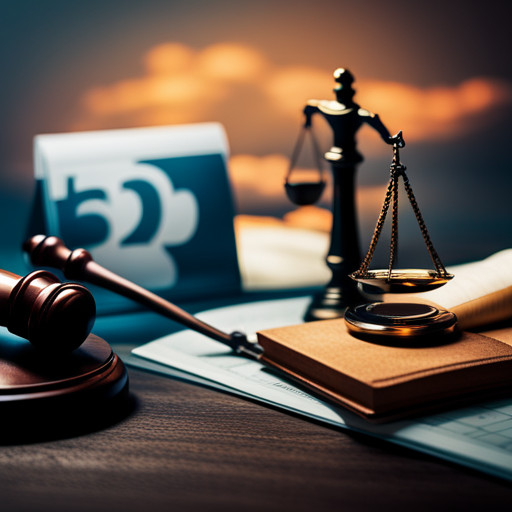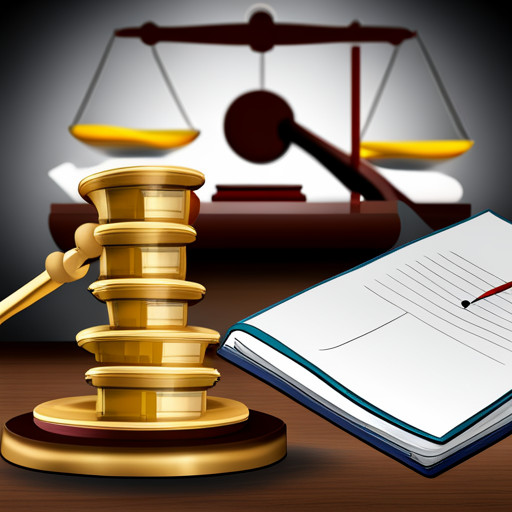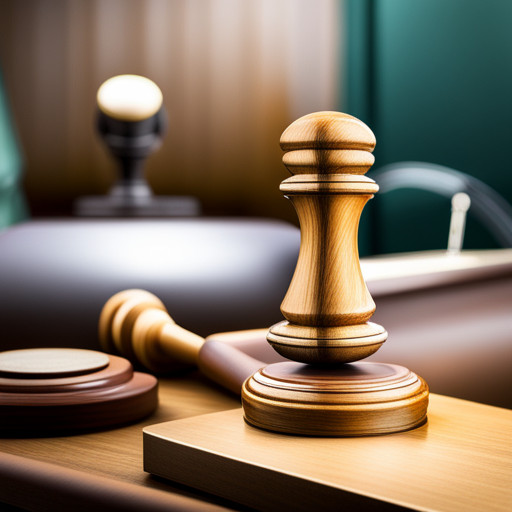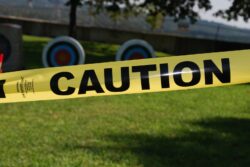Paraquat Lawsuit Update Latest Developments in Settlement Amounts
This article provides an update on the ongoing Paraquat multidistrict litigation (MDL), highlighting the latest developments in settlement amounts.

It explores the role of the Daubert hearing, evaluates the arguments of plaintiffs and defendants, and examines the potential impact of the hearing's outcome on settlements. The analysis also considers the volume of new lawsuits, potential trends, and the implications of the first Paraquat trial.
Insights into the growth and impact of Paraquat class action lawsuits are also discussed.
Key Takeaways
- The outcome of the Daubert hearing in the Paraquat MDL is crucial for potential settlements.
- There has been an increase in the number of Paraquat lawsuits, with a total of 4,552 pending.
- Jurisdictional issues are being raised in Pennsylvania, with defendants arguing against out-of-state plaintiffs suing them in that state.
- Daubert challenges are being made regarding the admissibility of scientific evidence, with a ruling expected in the next two months.
Understanding the Paraquat Lawsuit Update

The recent update in the Paraquat lawsuit reveals an ongoing Daubert hearing and various new cases. Plaintiffs are asserting that Paraquat exposure leads to Parkinson's disease, a claim contested by defendants Chevron and Syngenta. Understanding plaintiffs' allegations requires examining their claim of specific cell death and tissue damage, characteristic of Parkinson's disease, resulting from Paraquat exposure.
These allegations are backed by expert epidemiologist, Dr. Martin Wells. Counterarguments by defendants challenge the credibility of Dr. Wells and posit that Parkinson's primarily results from genetic factors.
The outcome of the Daubert hearing, which contests the admissibility of scientific evidence, is crucial for potential settlements. This update highlights the complex and contentious nature of the litigation surrounding Paraquat's alleged link to Parkinson's disease.
The Role of the Daubert Hearing in the Paraquat MDL

Daubert hearings play a crucial role in multidistrict litigations (MDLs), adjudicating the admissibility of expert testimony, as demonstrated in the ongoing case involving Paraquat.
The role of expert witness, Dr. Martin Wells, in the Daubert hearing is paramount, as the validity of his epidemiological findings is contested. His evidence forms the backbone of the plaintiffs' claim that exposure to Paraquat, an herbicide, causes Parkinson's disease.
The defendants, Chevron and Syngenta, challenge the scientific validity of this assertion, arguing that genetic factors primarily cause Parkinson's.
The significance of scientific evidence in the Paraquat MDL cannot be overstated, as the outcome of the Daubert hearing will likely shape potential settlements and determine the trajectory of this case.
Assessment of the Plaintiffs’ Claims

Assessment of plaintiffs' claims necessitates a meticulous examination of the correlation between herbicide exposure and the onset of Parkinson's disease, a process that involves careful consideration of scientific evidence, expert testimonials, and the credibility of the same. An evaluation of the presented data, therefore, remains a critical phase of the legal proceeding.
The validity assessment of the claims involves not only understanding the biological plausibility of the alleged harm but also determining the strength of the epidemiological evidence. The defendants' challenge emphasizes the importance of this rigorous evaluation process.
It is through this methodical scrutiny that the court will ascertain the merits of the plaintiffs' case, thereby shaping the future direction of the Paraquat lawsuits.
Counterarguments Presented by Chevron and Syngenta

Counterarguments by Chevron and Syngenta primarily hinge on the contention that Parkinson's disease results predominantly from genetic factors, rather than exposure to certain herbicides. These corporations challenge the credibility of the plaintiff's expert witnesses and their scientific evidence.
Firstly, the Chevron and Syngenta counterarguments posit that the link between Paraquat and Parkinson's is unclear due to confounding genetic factors. Secondly, the defendants question the reliability and applicability of the epidemiological studies presented by the plaintiffs.
Thirdly, they cast doubt on the biological plausibility of Paraquat causing Parkinson's. And lastly, Chevron and Syngenta argue that the plaintiffs are unable to demonstrate a clear dose-response relationship.
Importance of the Hearing Outcome for Paraquat Settlements

The determination from the imminent hearing holds consequential implications for potential resolutions in the ongoing litigation related to the herbicide in question.
Central to this issue is the importance of scientific evidence. The credibility and validity of such evidence, presented by expert witnesses, form the backbone of the plaintiff's claims. Irrefutably, the admissibility of this evidence greatly influences the trajectory of potential settlements.
Conversely, the defendants' counterarguments and Daubert challenges have consistently sought to discredit this evidence. These counterarguments are integral in determining the direction of settlements, as they challenge the causality asserted by plaintiffs.
Thus, the hearing's outcome will undeniably shape the landscape of settlements, with substantial implications for all parties involved in this complex legal battle.
Examination of the New Paraquat Lawsuits

Moving from the significant implications of the hearing outcome on potential settlement amounts, attention now shifts to the examination of new Paraquat lawsuits.
Notably, these lawsuits have illuminated several crucial aspects:
- The rise in the number of claims indicates an increase in awareness of potential risks associated with Paraquat exposure.
- Each lawsuit potentially influences the trajectory of similar future cases.
- The intricate details of each case provide insights into the strategies employed by both plaintiffs and defendants.
- The nature of the allegations and the evidence presented potentially influence the settlement amounts in both current and future lawsuits.
Ultimately, the outcomes of these lawsuits could set precedents, thereby having a profound impact on future lawsuits involving Paraquat exposure.
Implications of the Increase in Claims

The rapid escalation in the number of filed claims suggests a heightened awareness among the public regarding potential health risks associated with Paraquat. This swell indicates a growing concern over the alleged link between Paraquat and Parkinson's disease.
Such an upsurge in claims potentially impacts the settlement implications, influencing the overall outcome of the litigation process. The rise in legal actions also puts pressure on the defendants, possibly prompting them to consider significant settlement amounts.
Moreover, the rise in claims may drive a shift in regulations concerning herbicide usage, prompting government bodies to reevaluate safety standards.
It remains to be seen how this increase will shape future legal and regulatory landscapes.
Analysis of Jurisdictional Issues in Pennsylvania
Jurisdictional challenges in Pennsylvania have created a substantial hurdle, with defendants arguing against the legitimacy of lawsuits filed by out-of-state plaintiffs in this region. This argument centers around the assertion of a lack of general personal jurisdiction.
Defendants contend the Pennsylvania jurisdiction does not extend to them, raising questions about the validity of these lawsuits. Approximately 350 Paraquat lawsuits are currently pending in Pennsylvania state court.
The defendants' claim has introduced a degree of uncertainty regarding the interpretation of Pennsylvania law. The defendants have suggested a potential violation of the dormant Commerce Clause, complicating the issue further.
Additional briefings have been requested on these jurisdictional issues, indicating ongoing debates and potential challenges ahead.
Predictions for Future Lawsuit Trends

Forecasting the trajectory of future litigation trends indicates a potential surge in similar cases, driven by the increasing awareness about the alleged harmful effects of certain herbicides and the growing number of individuals claiming damages.
- The volume of Paraquat lawsuits might escalate, impacting the pace of future settlements.
- An increase in successful litigations could fuel more claims, affecting settlement trends.
- The rulings in current cases might shape the direction of future lawsuits and settlements.
- Alleged victims may seek higher damages, impacting settlement trends.
- The severity of the alleged health impact on affected individuals could influence the value of future settlements.
The Impact of the First Paraquat Trial
The outcome of the initial trial regarding the herbicidal product in question may greatly influence subsequent litigations and probable compensatory measures.
The first trial acts as a potential litmus test for the validity of claims being made against the manufacturers of Paraquat. The court's interpretation of scientific evidence and its decisions on key jurisdictional issues may set precedents for further trials.
Moreover, should the court rule in favor of the plaintiffs, it may encourage the filing of additional lawsuits. Conversely, a ruling in favor of the defendants could potentially deter future litigants.
Thus, the initial trial's outcome is pivotal in shaping the trajectory of this litigious matter.
Frequently Asked Questions
What Compensation Can a Plaintiff Expect if They Win a Paraquat Lawsuit?
In the context of legal strategies in Paraquat lawsuits, the compensation awarded to successful plaintiffs is contingent on several factors. These can include the extent of physical injury, duration of exposure to Paraquat, and the availability of Paraquat alternatives at the time of exposure.
Settlement amounts can cover medical expenses, loss of income, and damages for pain and suffering. However, it is essential to note that exact compensation amounts are determined on a case-by-case basis.
How Long Does a Typical Paraquat Lawsuit Take From Filing to Resolution?
The duration of a typical Paraquat lawsuit from filing to resolution varies. Influencing factors include the complexity of the case, court schedules, and potential settlement discussions.
The timeline is not uniform, as some cases may reach resolution within a year, while others extend for several years. This variability in duration is inherent in the legal process, particularly for lawsuits involving mass torts like Paraquat.
What Factors Determine the Settlement Amounts in Paraquat Lawsuits?
Determining settlement amounts in Paraquat lawsuits involves multiple factors.
The severity of the plaintiff's health condition, the extent of exposure, and the perceived negligence of the defendants play significant roles.
Additionally, the availability of Paraquat alternatives and the degree to which Paraquat regulations were adhered to or violated are also considered.
The strength of evidence, expert testimonies, and legal precedents further influence the determination of settlement amounts.
How Can a Plaintiff Prove Their Parkinson’s Disease Is a Result of Paraquat Exposure?
Establishing a link between Parkinson's disease and Paraquat exposure necessitates rigorous scientific evidence. Plaintiffs must demonstrate continuous and substantial exposure to Paraquat and subsequent development of Parkinson's disease. This can be supported by medical records, occupational history, and expert testimonies.
Evaluation of Paraquat alternatives and implementation of exposure prevention measures are vital aspects to consider. The credibility of these claims is significantly dependent on the acceptance of scientific evidence in court.
Are There Any Legal Resources or Support Groups Available for Those Affected by Paraquat Exposure?
Legal resources, such as aid clinics and pro bono services, are available to assist those affected by Paraquat exposure in navigating the complex litigation process.
Additionally, support groups can offer emotional assistance and shared knowledge, facilitating a better understanding of the ongoing lawsuits.
These resources significantly contribute to managing the physical, emotional, and legal repercussions of Paraquat exposure.




